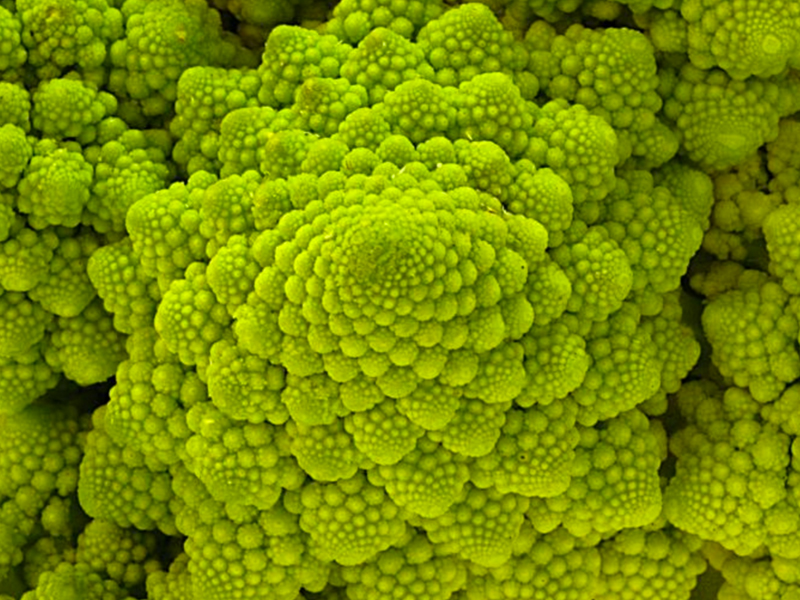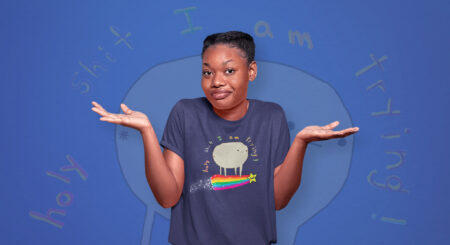My favorite memory of math was my last test in high school pre-calc. I sat down, grabbed my pencil, whipped out a calculator…and wrote “I don’t know” on half of the problems.
Just because I sucked at math didn’t mean I wasn’t interested in it. But “getting” geometry was pretty much my mathematical limit (which, for me, does exist.)

Math is often thought of as the opposite of creativity. But there is a way for the creative right brain and analytical left brain to harmoniously appreciate math together. And it’s called The Fibonacci Sequence.

Very very simply, it’s a sequence of numbers where you get the next number in the pattern by adding the previous two numbers. Like so:
0, 1, 1, 2, 3, 5, 8, 13, 21, 34, 55, 89, 144, 233, 377, 710, 1,087, 1,797, 2,884
And this sequence creates this ideal “spiral of life” found all around nature.

These spirals are found in fractal broccoli (the featured image which yes, is totally a real plant and is the coolest looking plant) and similarly in Nautilus shells, like this one.


This same spiral can also be found in sunflowers. Look at the seeds. Their arrangement in the middle allows the most seeds to fit in. But when you look closer? They’re organized in that magical spiral.
 The scales of a pineapple, the nubs on a pinecone (not actually called nubs), the arrangement of petals on roses — this sequence (and spiral) is found everywhere in nature.
The scales of a pineapple, the nubs on a pinecone (not actually called nubs), the arrangement of petals on roses — this sequence (and spiral) is found everywhere in nature.And since I don’t really know how to explain how calculating the spiral works, think of it this way — bananas? Have three sections. An apple? five sections. When a branching plant branches off from the stem, it often does it so that the stem (1) breaks into two branches (2) which then break off into three, then five, then eight, and so on — all numbers in the Fibonacci sequence.
Still not freakin’ out like Jim Carrey in The Number 23? (yeah…I just made THAT reference) How about this:
The human arm has the Fibonacci sequence goin’ on. We have 8 fingers, 5 digits on each hand, 3 bones in each finger, 2 bones in each thumb, and 1 thumb on each hand — all making up the first 5 numbers in the sequence. Even the human cochlea in the inner ear – a golden ratio, perfect spiral.

I am not good at math. But I am an artist with a fascination with the subject I’ve never been able to grasp. Maybe artistic expression is just the artsy brain’s way of understanding math in a creative way, using it in a way that the creative weirdo can understand. Heck, math can even be found in music:
So fellow number-challenged creatives — maybe you’re not bad at math. You just understand it in a different, beautiful way. And that’s something to nerd out about.
. . .
*Note: I am not a mathematician. I still count on my fingers. So if any of this information is TOTALLY wrong, let me know in the comments!
And if you want to learn more – or just read about this from someone who can explain it WAY better – check out Nikhat Parveen’s writeup about it here. That’s where I got the info.
Featured image courtesy of John Walker




